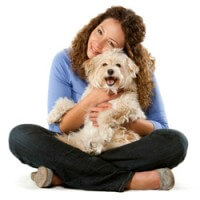Good communication builds good relationships
Good behaviour should be rewarded
Social skills aren’t just for humans!
One of the most important lessons your puppy or dog should learn is that they must sit before interacting with you or any other human. You can easily teach a puppy or even a mature dog to sit. Dogs learn at any age, as long as lessons are repeated often enough and teaching sessions are short and fun.
Step 1
• To begin, take a very special food treat like a small piece of cheese, and hold it between the two fingers of a hand.
• Place this hand close to the front of your pet’s nose.
Step 2
• Raise the hand above their nose and then backwards. Your pet’s head will move to follow the treat.
• Eventually, your dog will sit, because it will be more comfortable.
Step 3
Unwanted behaviour should be ignored…
If, in the past, you allowed your puppy or dog to gain your attention by barking or jumping up on you, you must realize that if you subsequently decide to ignore such behaviour, your pet will only try longer and harder to regain that attention. An analogy in human terms would be a person who presses the button of an elevator whose doors do not open. He or she will press the button repeatedly, before giving up and walking down the stairs. To success-fully change your dog’s behaviour, you must ignore—and outlast—all their efforts.
…Or interrupted
Dogs do react to eye contact. Call your puppy or dog by his or her name. As soon as they look at you, you should give them a special treat. Repeating this simple exercise at any time will teach your pet that it is worthwhile to pay attention to you. In fact, calling your pet’s name is an effective way of interrupting, and thus eliminating, unwanted behaviour. Making an unusual sound is another way of interrupting. Once your dog is paying attention to you, you can ask them to come or sit.
Play takes training, too!
Puppies and dogs need to exercise and play and to have contact and interaction with both people and other dogs. They should be taught to play with toys only and should learn that human hands, feet or any other body part are not toys. If your pet grabs a hand or foot, either intentionally or accidentally, such behaviour should be interrupted either by withholding your attention (ignoring them) or by making a high-pitched “ouch” sound. As soon as they let go, offer a large toy and resume playing.
Diane Frank, DVM
Diplomate ACVB

